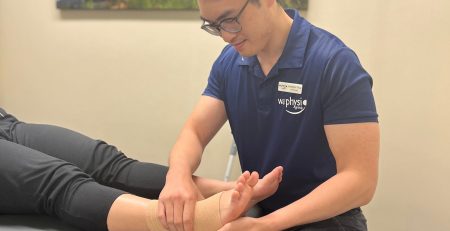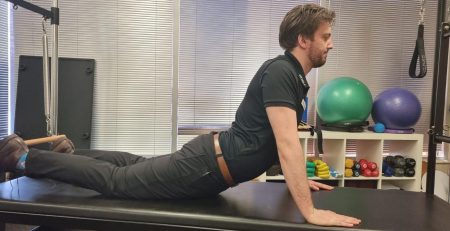Low Back Pain
This month’s newsletter is by our Senior Musculoskeletal Physiotherapist Dr Rob Waller. Rob has a special interest in spinal pain and has published multiple peer-reviewed publications on musculoskeletal pain. He recently completed a PhD that investigated pain mechanisms in young adults of the Raine Study (http://www.rainestudy.org.au).
Low back pain (LBP) is very common and is currently the leading cause of disability worldwide [2]. Like a common cold, most people will experience LBP as some point in their life, with most episodes short lasting and recurrent episodes common. For nearly all people with back pain it is not possible to identify a specific anatomical source of pain [1]. Only a very small proportion of people with LBP have serious pathology, such as vertebral fracture, cancer, infection or underlying inflammatory disorder, causing their pain. Unless specific criteria are present, using a scan to identify the problem is not indicated or reliable because MRI abnormalities are as common in those with LBP as in those without.
A common recommendation across all high-quality LBP clinical practice guidelines is routine imaging is discouraged unless serious pathology is suspected, it’s likely to change management (for e.g. surgery is being considered) or there has been a limited response to non-surgical care. There is no evidence routine imaging improves LBP outcomes and some evidence inappropriate imaging leads to worse outcomes.
If a specific anatomical cause for LBP is rarely identified, why do we get LBP?
Pain is complex and defined as “an unpleasant sensory and emotional experience associated with actual or potential tissue damage, or described in terms of such damage”. Low back pain is a symptom not a disease. Pain is the body’s warning system and can be associated with a real or perceived threat to the body.
While this can be useful following injury, pain without trauma is not a good indicator of damage. While a specific anatomical cause for LBP is hard to identify, over loaded structures in the back can cause pain. However, there are multiple contributors to the experience of pain including;
- Psychological factors (stress, anxiety and depression can sensitize the nervous system and amplify pain)
- Social factors (eg seeing how others respond to pain, previous experience of pain),
- Beliefs (eg I need to protect my disc, my back is structurally vulnerable and I should not bend)
- Comorbidities: obesity, diabetes, other musculoskeletal pain
- Lifestyle: inactivity, over-activity
- Interpreting pain as a threat, paying too much attention to pain (hypervigilance)
Key positive messages regarding LBP include:
- The causes of LBP are rarely serious
- LBP has a good prognosis
- Resuming normal activity as soon as reasonable is advised
- The back is a strong structure
- Pain does not equal harm
Key management for LBP should include:
- A thorough examination can diagnose LBP and exclude serious causes
- Advice about what’s contributing to LBP and understanding why you have pain
- Strategies to self-manage pain including physical activity
- Treatment and exercise specific to the problem
- Medication when required but not as the primary management
The key message here is the clear majority of people with LBP, including leg pain (sciatica), will have a good outcome with evidence based, non-surgical care. At Bassendean Physiotherapy we pride ourselves on our accurate diagnosis and contemporary evidence-based management of LBP.
You can BOOK HERE or Call us to make an appointment at 9279 7411.
[1] Almeda M, Saragiotto B, Richards B, et al. Primary care management of non-specific low back pain: key messages from recent clinical guidelines. Med J Aust 2018;208(6):272-275.
[2] Clark S, Horton R. Low back pain: a major global challenge. The Lancet 2018;391(10137):2302.
Author

Dr Rob Waller (Phd)
Senior Musculoskeletal Physiotherapist
Curtin University WA 2002
Cumberland College of Health Sciences NSW 1988
Rob Waller is a Musculoskeletal Physiotherapist, whose clinical practice focuses on restoring function with expertise in complex musculoskeletal presentations. He is also a lecturer at Curtin University teaching on the Postgraduate Clinical Masters program. Rob’s research interests are broad, including understanding factors that drive pain and implementing current evidence into best practice for musculoskeletal pain. To learn more about Rob, click here.











